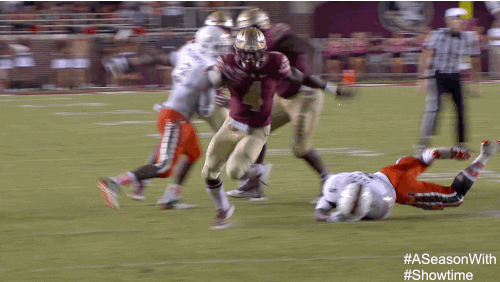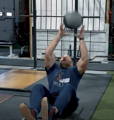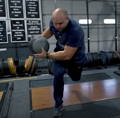The Secret to Killer Core Strength
When talking about core strength and core strength, we first have to do is identify what that even means. At Garage Strength, we think of using the term core interchangeably with the term trunk. If we think about core, it is basically the whole gut and the whole back. So, the preference of using the term trunk, we think more in line with the spinal column, the erectors, lower back, but additionally using them in conjunction with the abdominals.

The abdominal, better known as abs, is a long sheet of muscle on the gut, covering many organs. It is a very uniquely shaped muscular sheath. It is thinner but very long, having interesting impacts on how we move. So when we think of core training or trunk training, that brings us to the term of dynamic trunk control.
Thinking about dynamic trunk control, we have to analyze how the trunk moves. From a very basic, conceptual idea, the trunk is essentially responsible for side bending, flexing, extending, and rotating the torso. We need to think about it from the simplest terms. Everything in the trunk is responsible for that.
The next step to understanding the secret to core training is understanding where and how this applied to sports performance.
How does the trunk interact in regards to running, agility, racket sports, swinging a bat, throwing, and even swimming?
Let’s think about being involved with running and agility. The trunk is essentially under a ton of pressure when sprinting at high speeds. Athletes come out of the blocks and have a ton of energy that is being transferred from the ground into the abs which lead to executing sprint mechanics. Athletes come out of the blocks, into the drive phase, and then transition into maximal mechanics. At max speeds, we want that upright trunk position to have greater grounding forces underneath us to slow down the slowest down the track.

As we think about dynamic trunk control, we have to be able to handle all that energy and transfer it properly with solid technique. If we come out of the blocks too early with the trunk too vertical, we can’t accelerate as quickly as possible. If we are at top-end speed and can’t hold the trunk upright, we will lean forward and slow down because our mechanics aren’t as solid and our stride length won’t be as long.
Going into agility, when thinking of dynamic trunk control, we have to think of it from the mindset of controlling the spinal column and abs while running full speed and as we see an opening on the field, we need to be able to plant to cut. But before that cut, we need to plant and have a co-contraction in the spinal column and abs (this is the dynamic trunk control), we will not collapse forward, instead, we will be rigid and able to change direction. The pelvis will rotate and the torso will follow. Without the dynamic trunk control, we’d just collapse and be able to cut quick enough. This is noticeable in younger kids because they lack the dynamic trunk control needed to make the cut.

Now let’s take that same idea and think of a racket sport like tennis. The athlete is coming to the net, reading a shot, the athlete needs to be able to plant, cut, and make a proper hit, it is unable to happen without dynamic trunk control. Think about it. Lacking dynamic trunk control the tennis player will keep collapsing forward and be able to make contact with the racket to the ball. Properly trained athletes with advanced neurological adaptations in their trunk will be able to come across their body, make the hit, and make the volley.
The same goes for football quarterbacks. If they are falling backward, about to get hit, but can hold their trunk stable and be rigid as they release the football can still make a good pass. A quarterback who isn’t trained properly in the concepts of dynamic trunk control will be unable to make that play. Even the best won’t be able to make that play sometimes.
Let’s think about baseball players or a batsman in cricket. A batsman in cricket who is trained properly can have both their eyes on the bowler and control their trunk. Now a batsman in cricket not trained as well will start to peak with their head and lose their dynamic trunk control and be able to make a solid hit.
Same thing for baseball players. As they lead with their pelvis, their trunk control will help them to adapt with their hands, especially if they need to hit a curveball when it goes against the initial pitch expectations.
This also comes into swimming. If we have a swimmer who can hold proper dynamic trunk control, holding their gut with their spinal column, they can have a better posture in the pool which leads to a longer, more effective stroke with greater power output.
We have to understand our trunk’s responsibility with running, agility, racket-based sports, throwing, batting, and even with sports like swimming, water polo, and other competitive ventures. And with that understanding, we can really get into some examples of how to properly train to get advanced neurological adaptations so that we can improve our side bending, our flexion, our extension, and ultimately our rotation to improve overall sports performance.
1. V-Up Med Ball Throw & Absorb
Our first round of movements is based on flexion and rotation in dynamic positions. This could be used for a lot of sports.
We can do this movement with a partner in front of us or even do a side rotation, but in this case, we want to just do it for height. We want to hold the V-up position, almost like a higher-up dead bug, and throw the med ball up, catch, and absorb. Here is the thing, if the trunk did not execute a co-contraction the torso would fall backward when throwing or catching the med ball. The abs and spinal column, not co-contracting would make it very difficult to throw and absorb the med ball.

One thing that can be done on the catch is to rotate. This is a great movement for lacrosse, baseball, cricket player, or any sport that can benefit from rotational absorption.
2. Barbell Dynamic Pull Down Absorb
This movement makes us think about wrestlers. Oftentimes wrestlers are in a collar tie and need to flex through their abs but also need to be strong in their lower back. They have to have dynamic trunk control.
With an empty barbell (at least to start), put the barbell above the eyes while holding a V-up position. From there, rapidly pull the barbell down to the chest while continuously holding the trunk rigid.

This movement shows how we are talking about dynamic flexion in regards to dynamic trunk control. Both of these first two movements can be paired with a slow eccentric front squat or zombie squat. We can utilize absolute strength movements with these advanced dynamic trunk control movements to elicit a great response to bring about spectacular success for athletes.
3. Chinese Side Bends
This next movement is really advanced in regards to the side bend. This is a movement for field hockey players or anyone in a rotational sport like throwing. This movement is also really important for agility and cutting. So athletes in an open skill sport, like soccer, football, American football, basketball, or anything along that line.

Holding a kettlebell or dumbbell or band in each hand, lean side to side and lift with the elbow, alternating side to side. We want to focus on pushing the belly button out and squeezing in the lower back, with a big focus on pre-fatigue.
Then rest thirty to sixty seconds and head into the next movement and see how the Chinese side bends impact agility.
4. Medball Side Jumps
Holding a med ball in the hands, perform single-leg side jumps side to side. Pause in the landing for an isometric moment. WIth the medball, swing it across the body side to side. A big focus is to land and stick the landing, engaging through the core to hold the medball and balance the body.

It is easy to see how a movement like this will help with speed skating (short track or long track). The whole point is that the little bit of pre-fatigue from the Chinese side bends to set the body up to co-contract properly to handle the isometric action that comes about from the grounding.
Utilize this movement for any athlete who struggles to make cuts.
5. Half-Turn Punch
This last movement goes over a rotational movement that will help improve dynamic trunk control rotationally. When we rotate, typically the pelvis rotates first and then the shoulder follows. Shot putters, pitchers, and boxers almost always have the pelvis rotate, then the trunk control elicits all the elastic energy that then transfers into the upper appendages. That is a really basic way of understanding dynamic trunk control rotationally.
What we like we do with pitchers, shot putters, or discus throwers, we will do advanced concepts like this to improve their trunk control to get bigger responses from their overall performance. Boxers, MMA fighters, and batters in baseball can do this.
Using a PowerLastic band anchored to an immovable object, we want to get into a half-turn position. The whole point is to hold the band in the handles. We want to do both sides. So holding the band with the right hand, we will rotate counter-clockwise, leading with the left leg, spinning on the right foot, grounding and punching forward.



Really think about holding the punch and then coming back from a slow eccentric to help train the coordination elements of the movement. This will be felt all throughout the trunk and the lower back. It stimulates superb dynamic trunk control which all goes into sports performance.
Recap
All of these movements are advanced and must be utilized to improve dynamic trunk control. Dynamic trunk control is a big brain concept that is used with all of our champions at Garage Strength. A strong trunk makes for a more agile athlete, a faster athlete, and a more athletic athlete. A strong trunk may look like six-pack abs, but it definitely looks like an athlete who maintains their upright posture when cutting on the field. Aesthetics are nice, but breaking someone’s ankles for a meme or gif has its perks.
DANE MILLER
Dane Miller is the owner and founder of Garage Strength Sports Performance. He works with a select handful of clients on building comprehensive programs for fitness and nutrition. Several times a year he leads a workshop for coaches, trainers, and fitness enthusiasts.


